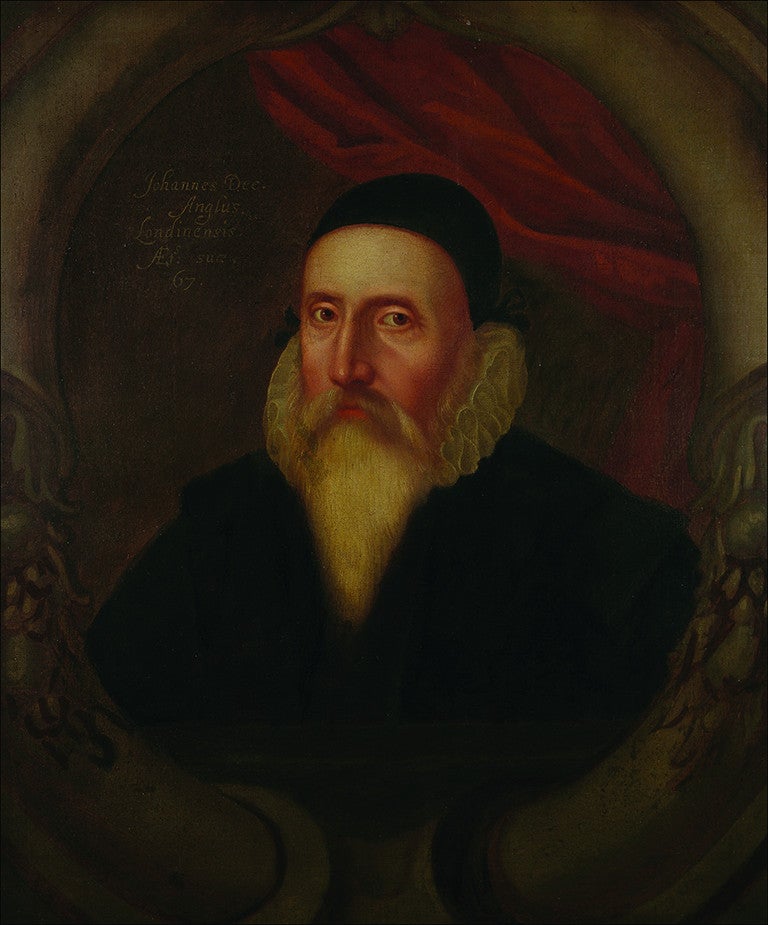Scientists have shown that an obsidian hand-mirror once owned by the Renaissance polymath John Dee has Aztec origins, thus confirming a longstanding mystery.
John Dee was quite the character. Born in 1527, the Renaissance thinker was interested in all sorts of stuff, from mathematics, geometry, and astronomy to astrology, alchemy, and the occult. This unholy mixture of science and quackery seems unsavoury by today’s standards, but Dee, like many of his contemporaries, failed to make the distinction. This was pre-Enlightenment Europe, a time when thinkers gave credence to all sorts of ideas that now seem rather strange. Now, don’t act all smug — astrology still takes up way too much of our collective headspace (not to mention all sorts of other unfounded beliefs floating around these days), so there’s still room for improvement.

Dee was the scientific advisor to Queen Elizabeth I from 1550 to 1570, but his interests steadily gravitated toward the supernatural. By the 1580s, Dee was actively scrying, or performing divinations, to predict the future. His tools included crystals (he literally used a crystal ball) and several mirrors, one of which was a hand-held mirror made from obsidian.
Historians have presumed that this striking black mirror was of Aztec origin, but no known records exist to show how Dee got his hands on it. New research published in Antiquity now clears up the matter, affirming the mirror’s Aztec provenance. Accordingly, the paper is providing new insights into Renaissance culture and Europeans’ relationship with foreign materials brought in during the colonial period.
Archaeologist Stuart Campbell from the University of Manchester and colleagues Elizabeth Healey, Yaroslav Kuzmin, and Michael Glascock determined the composition, and thereby the geographic source, of the artefact through a geochemical analysis, specifically X-ray fluorescence. The obsidian mirror was bombarded with X-rays, causing it to leak out measurable amounts of radiation (the fluorescence). Different elements within the obsidian generated different types of fluorescence, allowing the team to measure its chemical composition, which in turn created a sort of chemical fingerprint for the object.

“The good thing about doing it with obsidian is that obsidian is only found at a limited number of volcanoes around the world, so there are quite a small number of potential sources and we largely know their composition,” Campbell explained in an email. “So it simply becomes a case of matching the chemical profile of the object against the chemical profiles of all the potential obsidian sources.”
In this case, the chemical fingerprint from the John Dee mirror closely matched the profile of Mexican obsidian, specifically obsidian from Pachuca — a known source of Aztec obsidian. In addition to this relic, the team analysed two other presumed Aztec mirrors and a polished rectangular obsidian slab, all three of which were likewise found to come from Mexico.
“We were also able to use previous studies of Aztec obsidian mirrors and, as part of this research, we made a new catalogue of similar mirrors that are known in museum collections,” said Campbell. “Currently we know of 18 mirrors of this type and, although there is some variation, it is clear that the John Dee mirror fits into this group very well.”
The European interest in these mirrors may have been a reflection of how the Aztecs used them. Polished by bat guano, they were spiritual items used for healing, protection against evil spirits, and for capturing souls. Aztec art depicts the deity Tezcatlipoca, whose name translates to “smoking mirror,” as wearing a circular obsidian mirror — a “medium and symbol of revelation, premonition and power,” according to the study. These mirrors likely made a big impression on the European colonizers, who shipped them home as items of value. Dee, with his interest in the Spanish conquest of the Americas, likely heard stories of these obsidian mirrors, which possibly led him to want one for himself.
Campbell says this research “helps us understand something of the way in which the European voyages of discovery and engagement with other parts of the world — often through disastrous conquest — was matched by new intellectual attempts to understand how the world worked.” These novel artifacts often entered the collections of nobility and experts, whether as curiosities or items that could help scientists like Dee to understand the world in new ways, he explained.
“It’s important to see what John Dee thought he was doing in that light,” said Campbell. “He was attempting to understand how the world worked and thought he could do that through a search for hidden meanings, however odd his methods now seem. New and exotic artefacts that were appearing in Europe in the 16th century were one tool that he could use.”
For Dee, his obsession with the occult and supernatural never got him very far. After leaving Elizabeth’s service, he travelled around Europe with Edward Kelley — a medium who used crystal balls to converse with angels and spirits, or so he claimed. The duo often performed magic in front of royalty, but Dee eventually fell into poverty. He returned to England only to find that his extensive library of books were vandalised and his scientific instruments stolen. The English were also becoming less tolerant of his occult practices, making it difficult for him to earn a living. He died in poverty at the age of 81. Dee has no known gravesite, but a memorial plaque was installed in 2013 inside the church of St. Mary the Virgin of Mortlake.
As for the obsidian mirror, it eventually fell into the hands of English writer and politician Horace Walpole. The relic is currently kept at the British Museum.
